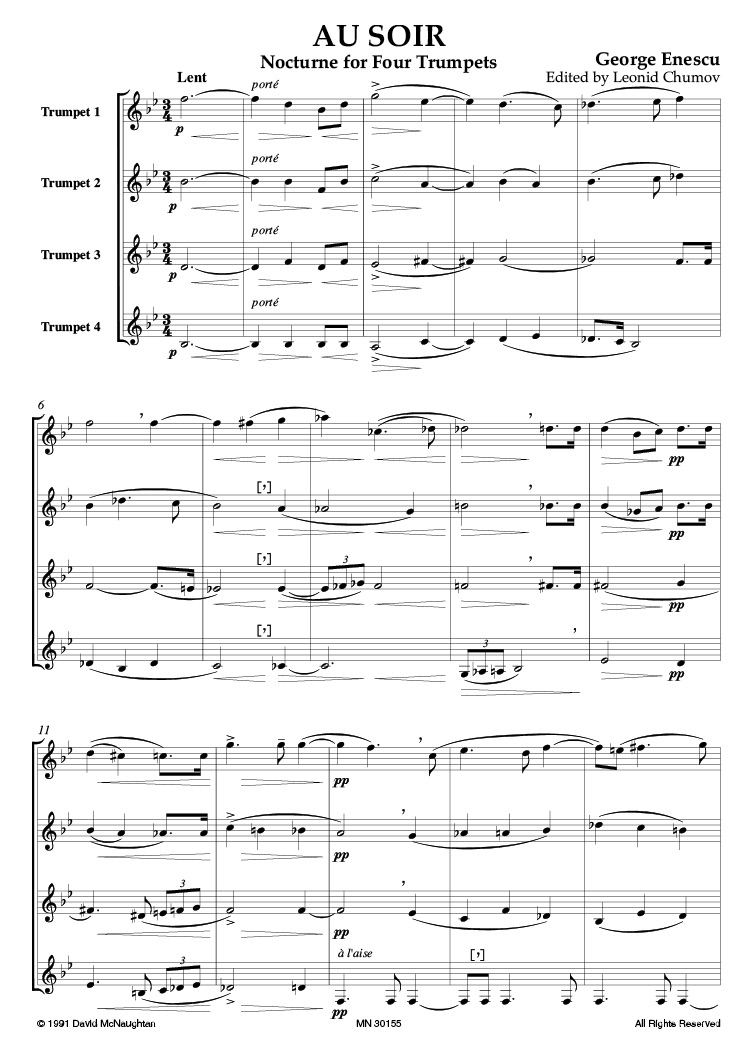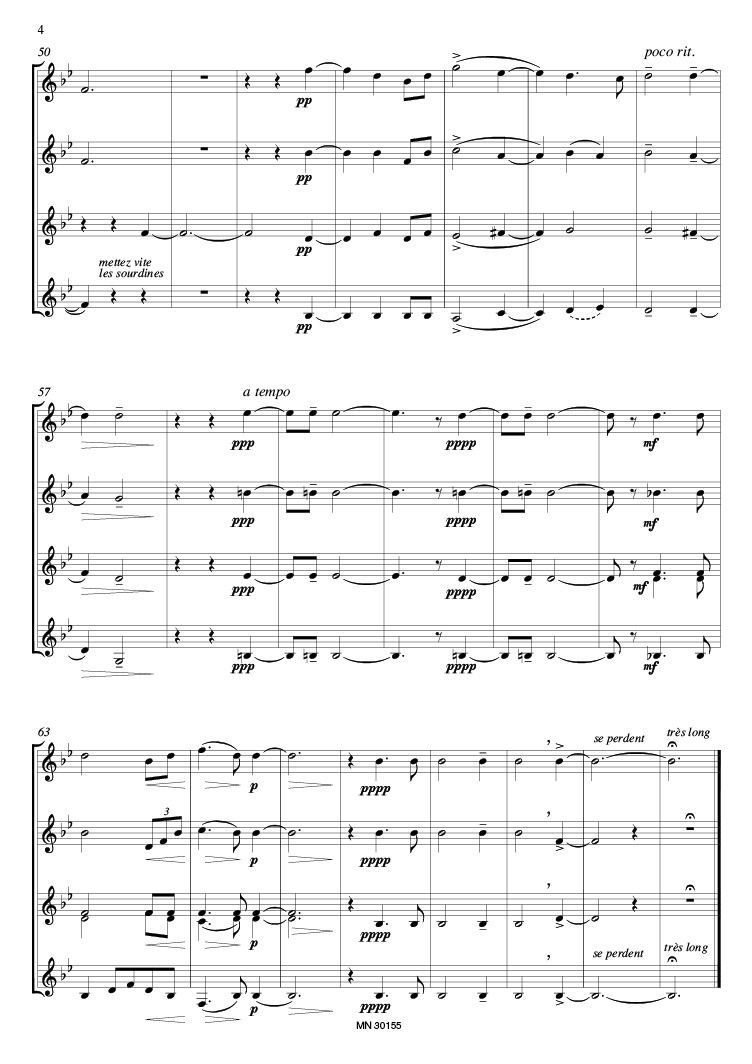
Enescu "Au soir" for 4 or 8 Trumpets
Instrumentation: 4 or 8 Trumpets (4 parts with minor subdivisions)Difficulty (I-VI): IV
Parts for: Trumpets I-III in C or B flat, Trumpet IV in B flat (2 sets of parts supplied, see below)
Series: Edward Tarr Brass
Editor: Leonid Chumov
George Enescu (or Georges Enesco,1881-1955), the Romanian composer, violinist, conductor and teacher, divided his time between Paris and his native country. He started to play the violin at the age of four and to compose one year later; from 1888 to 1894 he studied at the conservatory of the Gesellschaft der Musikfreunde in Vienna. He then went to Paris, initially to continue his studies at the Conservatoire; he was already a mature performer, however, and was soon associating with leading musicians there, composing and starting to conduct. In 1898 his opus 1, the Poème roumain, was performed at the Concerts Colonne, and he gave the first performance of his Violin Sonata No.1 with Cortot; two years later he played his Sonata No.2 with Thibaud. Simultaneously he was helping develop the musical life in his own country, founding the Enescu Prize for composition in Bucharest in 1912, for example, and inaugurating the Romanian Opera House in 1921 by conducting a performance of Wagner's Lohengrin. His activities continued in parallel in France and Romania for the entire duration of his life. As a composer, he was at first an eclectic, being influenced by the national elements of Romanian folk music, Wagner (whom he deeply admired) and even neo-Classicism (until World War I), reaching his mature style in the 1920s. His greatest masterpiece, although it is relatively unknown outside his native country, is his opera Oedipe, written between 1921 and 1931 and first performed at the Paris Opera in 1936.
In Paris, Enescu got to know Merri Franquin (1848-1934), professor of the trumpet at the Conservatoire from 1894 to 1925, and even worked with Franquin's trumpet class. This collaboration led to his composing two pieces in late 1906, finishing them both on December 19. One of them, the Legende pour trompette et piano, written for the annual conservatory competition, is now regarded as one of the small masterpieces of the solo trumpet repertoire. The otherwork is the present nocturne. The premiere was not given until April 21,1910, when it was performed by a trumpet quartet in the first concert of the Mozart Society (whose president was Gabriel Fauré) in the Salle Pleyel in Paris, together with other works by Faure, Alfredo Casella, Alfred Bruneau and Paul Dupin. At this performance it was called a "Poem for 4 Trumpets". Notes on Performance Enescu apparently conceived the work for multiple trumpets, since his specifications of the four trumpets in the plural at the beginning of the score and his indications of diuisi in the inner parts are unequivocal. Because of intonation diffculties, the piece would probably be better performed by a large number of trumpets instead of, say, only eight. However it can also be performed without loss of substance by only four trumpets, following the tradition established by the first performance in Paris mentioned above.


